The story of “Jonah and the whale” is one of the most enduring and endearing in the Bible. Children over the centuries have gone to sleep with it. Sailors over the centuries have lost sleep over it. It surely must be one of the most loved, yet laughed-at accounts in all the Bible.
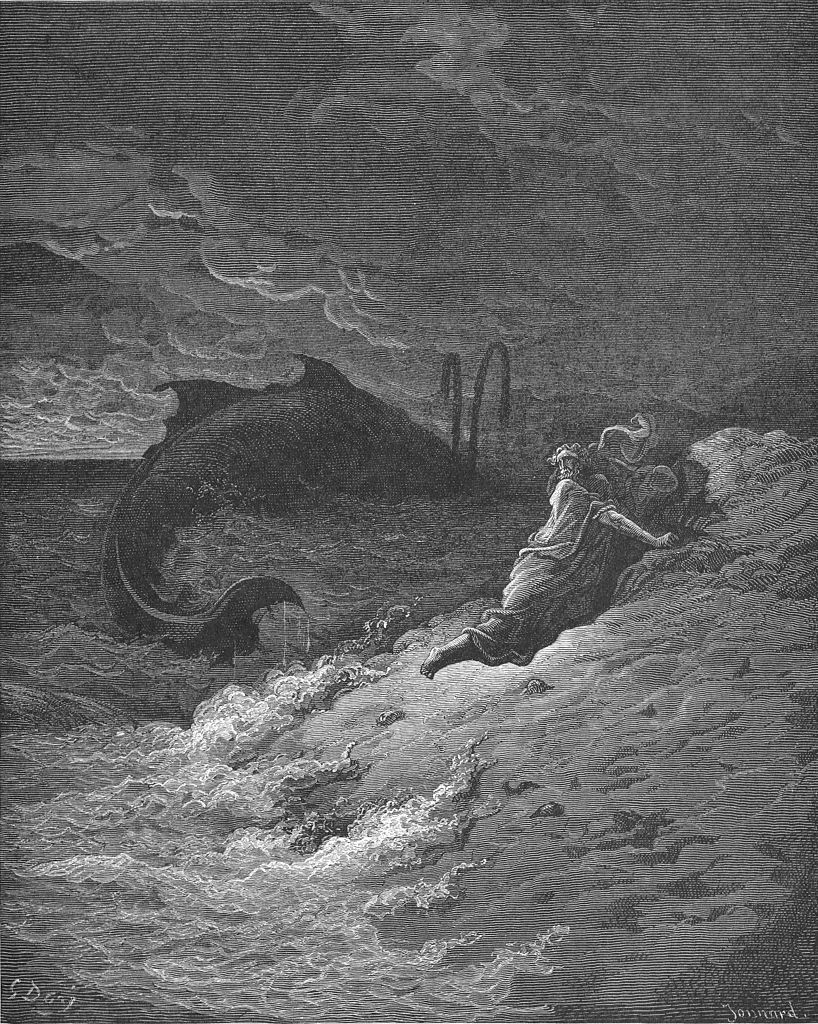
Just how physically possible is the account of “Jonah and the whale”?
Recently, we examined the historical evidence affirming virtually everything else within the book of Jonah—a remarkably period-accurate account of Assyria. But given the focus on archaeology, we intentionally skipped over this part of the story.
So what, then, of the enigmatic chapter 2—what of “Jonah and the whale”?
A ‘Big Fish’
Jonah 1:17 states (King James Version throughout):
Now the Lord had prepared a great fish to swallow up Jonah. And Jonah was in the belly of the fish three days and three nights.
The story is often referred to as “Jonah and the whale” (thanks to the English translation of the New Testament references as whale). The Hebrew here for “great fish,” however, is more generic—and even the original Greek word in the New Testament could refer to a generic sea creature. Thus, it could refer to any kind of fish, shark or whale.
What sort of creature could admit an entire human into its jaws?
One that immediately comes to mind is the whale shark. The whale shark is the largest confirmed “fish” in the sea by definition, growing up to 22 meters (70 feet) long and weighing 20 tons. (Technically, true whales are not classed as “fish” in the English language.) As this RealClearScience article explains, it is possible for an entire human to fit into the 4-foot-wide mouth. The whale shark is a “filter feeder,” and its teeth are miniscule. Thus, a human could survive if sucked in along with copious amounts of water—as this diver did, getting pulled in head-first all the way to her thighs, before the shark spat her out. It would, however, be extremely cramped to be completely contained inside the mouth, and you wouldn’t get any further into the belly of the beast—its esophagus is only a few inches in diameter. The same is true for the somewhat smaller basking shark: a gigantic mouth, but not much beyond that.
This is the main kicker. Several large sea creatures, particularly many different whale species, could readily admit a human into their mouths. But perhaps only two or three different species could get a human down in one piece through their esophagi. And Jonah is described as being within the “belly” of the beast—a Hebrew word that refers to the abdomen.
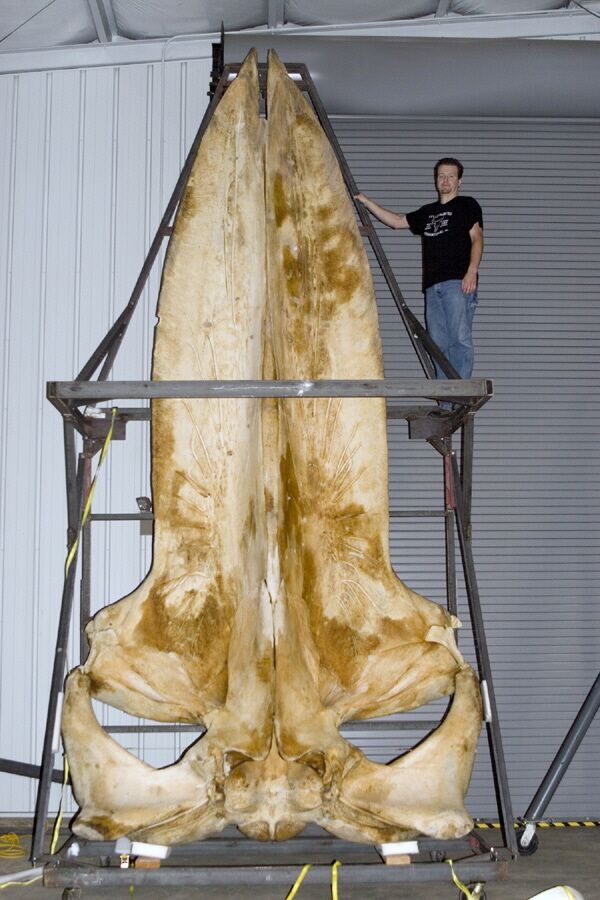
Baleen (filter-feeding) whales, even though they are the most massive creatures on Earth, feed on small prey (plankton and krill), meaning that they, as with the filter-feeding whale sharks and basking sharks, have a narrow esophagus. Still, it is possible a human might just make it down the esophagus of the very largest species, the blue whale. This behemoth of the seas can grow up to 30 meters (100 feet) in length and weigh up to a colossal 200 tons. The esophagus is nearly a foot in diameter, so a slender individual might be able to be squeezed through through the tube of an exceptionally large blue whale. Once inside the stomach, things would become much roomier; unsurprisingly, blue whales have the largest stomachs of the animal kingdom—their fore stomach can contain up to a metric ton of material.
They are not, however, found in the Mediterranean Sea. The second-largest whale species is: the fin whale.
The fin whale is a close relative of the blue whale and looks virtually identical—only smaller. Just under a month ago, the largest one ever recorded was discovered floating in the Mediterranean—20 meters (65 feet) long and weighing between 70 and 80 tons. Mouth size? No problem (as pictured below)—but here again, unless it was a truly unknown, massive representative of the species, the esophagus would present more difficulty.

While we’re on the subject of baleen whales: Two years ago, a snorkeler became caught in the mouth of a Bryde’s whale off the coast of South Africa, before it spat him out. Amazingly, the terrifying event was caught on camera (you can see pictures here). The Bryde’s whales are a smaller species, growing up to 15 meters (50 feet) long, weighing up to 25 tons.
So of the baleen whales, the blue whale is the closest option.
But there is another species—one that not only could get a human within its jaws, but could swallow him or her whole. It is a creature for which numerous terrifying interactions with humans are described, and a creature that frequents the Mediterranean Sea: the sperm whale.
Moby Dick
Ah, the whaler’s worthy adversary. Numerous books, songs and movies have been written about these beasts and their historical contact with human hunters. (Their name does not have anything to do with reproduction—ironically, sperm whales have one of the lowest reproductive rates of the animal kingdom. Rather, it refers to the waxy spermaceti substance found in their heads, for which they have historically been harvested.) Weighing in at up to 80 tons and reaching lengths of 24 meters (80 feet), they are the largest-known toothed predators in the world. With a head making up a full third of their entire body length, they sport a distinctively long-toothed mouth set with some 50 prominent teeth, each up to 20 centimeters (8 inches) long and weighing as much as 1 kilogram (2.2 pounds).
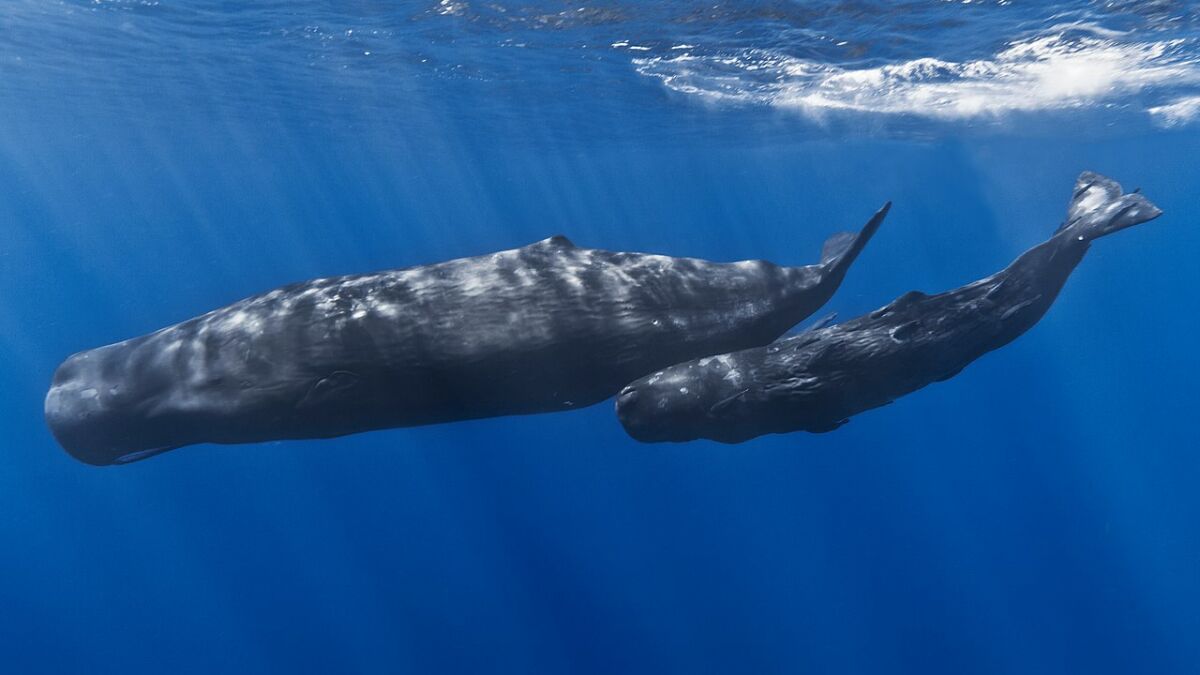
Sperm whales have been cut open to reveal entire sharks and squid that had been swallowed whole, as well as other flotsam. Their jaws aren’t designed for “chewing”—thus, they are adept at swallowing whole prey. So it is certainly possible that they could swallow an entire human (as this Smithsonian article points out).

Tragically, some washed-up sperm whales have been found with their stomachs literally full of garbage—such as this 14-meter-long specimen discovered in 2019 with a 100 kilogram (220 pound) ball of rope, netting, plastic and tubing in its stomach. (It at least illustrates Jonah 2:5, the “weeds [that] were wrapped about [Jonah’s] head” within the belly.) Sperm whales can consume around 1 ton of food per day—making an 80-kilogram male a side dish.
As long as the individual made it safely past the teeth, it could be possible to be sucked down the gullet of a large sperm whale and contained within its stomach. It goes without saying that it would be the most unimaginably terrifying, disgusting and uncomfortable experience: “[M]y soul fainted within me” (verse 7).
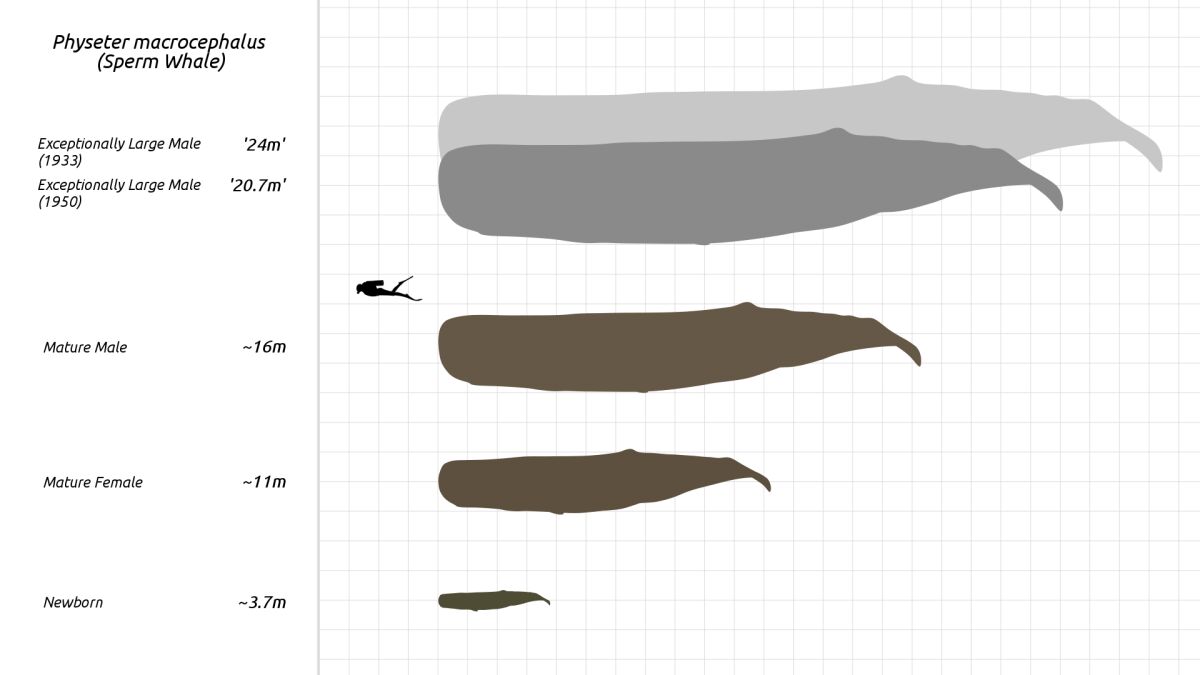
Another tidbit in Jonah 2 could fit well with sperm whales. Verse 6 says that Jonah “went down to the bottoms of the mountains.” Sperm whales are known as the deepest-diving large whales of the whale kingdom; they spend time hanging around continental shelves hunting for giant squid, and can dive down to more than 3,000 meters (10,000 feet), holding their breath for around two hours.
Finally, at the end of the Jonah account, the creature is described as having “vomited out Jonah upon the dry land” (verse 10). This is another neat tidbit. Whales can and do “vomit”—and as it turns out, the sperm whale is known for its “vomit.”
Sperm whales are unique in producing what is known as ambergris, a malleable-yet-solid substance formed in the bile duct, historically “harvested” for use in cosmetics, perfumes and cigarettes. It can be harvested straight from the bodies of the whales, but can also be found discharged and floating on the ocean surface or washed up ashore. When fresh, it is pretty foul-smelling—but with age, it takes on a sweeter smell. It is still unknown what purpose this substance serves, but given that some giant squid beaks have been found contained within ambergris, it likely has something to do with passing incredibly tough objects. Chunks of ambergris can range in size, even up over 50 kilograms (110 pounds).

Perhaps Jonah was “spewed” out, then, in the same manner a sperm whale would eliminate ambergris. Passing the shoulder width of a man would be akin to passing the width of a large piece of ambergris (see right. And to get an idea of a whale belly under pressure, look no further than this horrifying video. Slightly unrelated physics, but fascinating nonetheless!).
Given the whaling folklore associated with sperm whales, many accounts describe human interactions and deaths or disfigurement thanks to being caught in their jaws while attempting to harpoon them. There are, naturally, some dubious tales. One well-known example is that of James Bartely, who reportedly went missing off a ship in the midst of a battle with a sperm whale; the whale was eventually caught and, after 36 hours, the crew cutting up the specimen was stunned to find Bartely alive within the whale’s stomach, albeit unconscious and with his skin bleached by the stomach acid. The story made headlines around the world—but in the decades that followed, was called into question. The boat described did exist, but it was not a whaling vessel; there was no registered crew member of that name; the wife of the said-captain wrote that she was with him on every voyage on the ship, and that “there is not one word of truth in the whale story.”
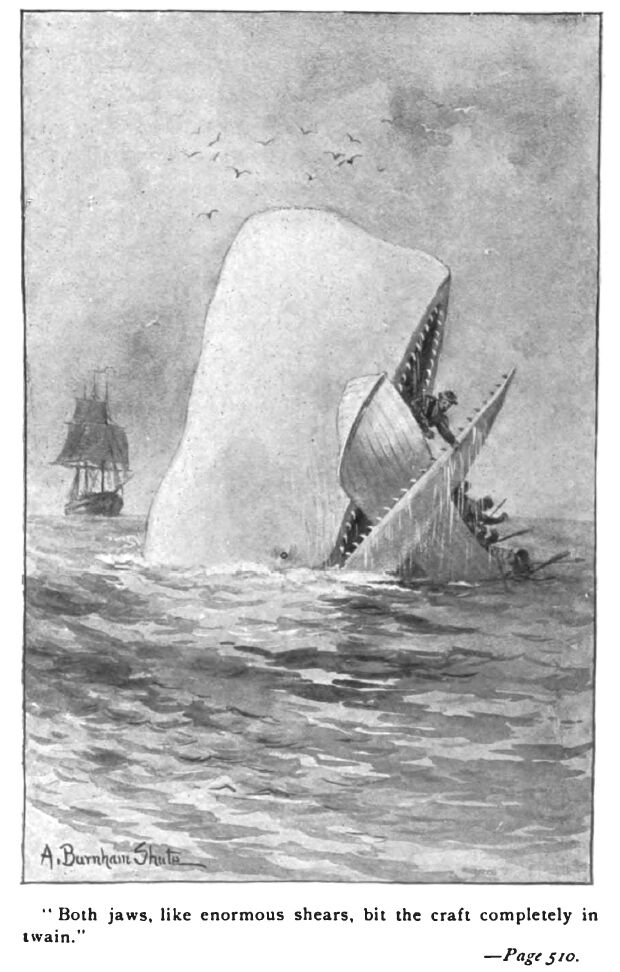
Plenty of accounts over the last several centuries of whaling describe sailors maimed within the maws of desperate sperm whales. It would take a miracle for an individual to be “safely” swallowed whole (if I can put it that way)—which is the very thing the book of Jonah describes (Jonah 1:17).
Sperm whales are truly awesome animals. The following is a little tangential, but: Did you know that they are the loudest animals on the planet? Their forehead structure acts as a massive form of sonar, and it is believed that these animals can hear one another from thousands of miles away—and some researchers postulate that they can communicate from opposite sides of the planet. In this video, sperm whale expert James Nestor explains how a human could even be vibrated to death with the sound waves. “So when you’re diving with them, it’s a little sketchy,” he says. He described one diver putting out his hand to stop one of the sperm whales from running into him—and because of whale’s clicking, “his hand actually was paralyzed for about four hours afterwards.” If this was the creature that swallowed Jonah, then perhaps God had to shut it up for 72 hours!
For this article, we’ve discussed only known animals. Who knows what other gigantic creatures are lurking in the deeps. Perhaps Jonah was swallowed by the terrifying leviathan, described in Job 41 (you can read more about this creature, and what it might be, here). Or what about any of the known “prehistoric” sea monsters, like Megalodon? “Extinct” sea creatures have been rediscovered in recent decades, and new species are being discovered all the time. In fact, in just the last three months, two new species of whale have been discovered.
Jonah 1:17 says that God “prepared a great fish” to swallow Jonah. Could He have created something entirely different on the spot? Sure. But the word “prepared” more often refers to assigning, numbering or appointing—perhaps thus assigning an existing specimen for the job.
You may have your own theories. Call me Ishmael, but I’m a fan of “assigning” the sperm whale option. (Below is the trailer for the recent Hollywood movie In the Heart of the Sea—a title taken from Jonah 2:3—based on the true sperm whale story that inspired Herman Melville’s Moby Dick.)
Could It Have Happened?
Let’s just look at this purely physically, probabilities aside. Could any known sea creature have swallowed a human being whole? Yes. Could any known sea creature have ingested said human—still whole—into its belly? Yes. These things are all in the realm of possibility.
So where does the “impossibility” lie? It is in the human being kept alive, in such a hostile, oxygen-deprived, acidic environment as the “belly” for 72 hours. That is where the miracle lies. And that is where the Bible says the miracle lies.
As Jonah 2:6 readily admits, if nature had taken its course, Jonah would have been a dead man. Swallowed alive, sure—but quickly killed in the inhospitable environment, starved of oxygen, and dissolved by stomach acid. He was essentially a “dead man” for those three days and nights. “But you, O Lord my God, snatched me from the jaws of death!” (New Living Translation). “[T]he earth with her bars was about me for ever: yet hast thou brought up my life from corruption [death], O Lord my God” (kjv).
That a man would survive 72 hours swallowed inside a “great fish” is ridiculous, impossible. And the book of Jonah itself admits as much! Those critical of the Jonah account as an impossible “trope” only emphasize what the book itself says. It shows that Jonah couldn’t have survived except by divine miracle. The same is firmly established in the New Testament references—that such a “resurrection” from the deep could only come by a physically impossible miracle (Matthew 12:40). Thus, natural explanations can only go so far.
As we have examined, getting Jonah whole into the belly of a fish was physically possible. As for the matter of keeping Jonah alive? That’s God’s department. And “science” hasn’t yet proved that God cannot do that.
As the Bible states elsewhere: “With man this is impossible, but with God all things are possible.”

